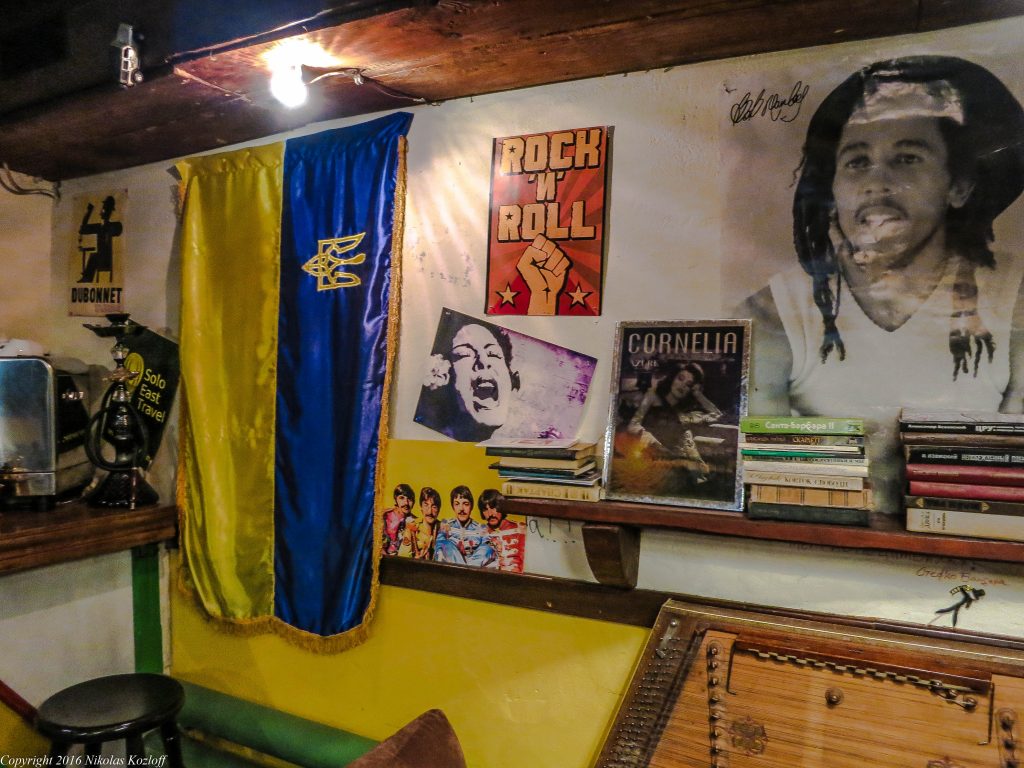
Maidan Year Three: Welcome to Ukraine’s Revolutionary Cafe
A few blocks from Kyiv’s bleak and imposing Stalinist-style Maidan square lies a nondescript alleyway. Passing through a gate, one arrives at Ukraine’s revolutionary café, Bar Baraban, which played a key role in protests resulting in the eventual toppling of the unpopular government of Viktor Yanukovych. Three years ago, as the political situation worsened on the Maidan amidst a nasty police crackdown, the owner of Baraban, Gennady Kanishchenko, turned his bar into a makeshift refuge for protesters who feared for their lives.
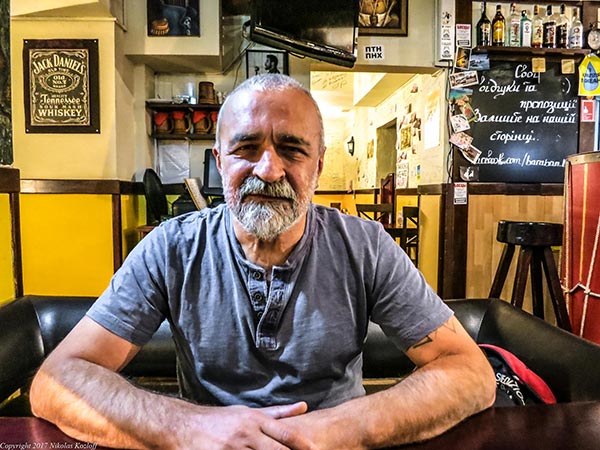
A jolly middle-aged man with close-cropped beard, Kanishchenko is all too willing to relive the heady days of Maidan. “For me,” he remarks over a pot of tea, “the revolution started not on Dec 1st, 2013 when almost a million people rallied in the square, but earlier when students set up shop in Maidan to protest Yanukovych’s decision to sign a customs union with Russia rather than an association agreement with the European Union.” On the night of November 30th, Kanishchenko found himself at work very late at night. The owner’s staff had already left and the only souls remaining at Bar Baraban were Kanishchenko and a Danish journalist surfing the internet.
Suddenly, the reporter heard that police had descended on student protesters on the Maidan and the Dane dashed out of the bar. A half hour later, the journalist stumbled back into Baraban, his face beaten to a bloody pulp by local police. By that point, it was already three in the morning, and students began to show up at Baraban seeking shelter. “They were sure the police would arrest or even kill them,” Kanishchenko says. Turn out the lights and lock the door immediately, pleaded the students. All too willing to oblige, Kanishchenko let the students spend the night in his bar.
Witness to Revolution
As the Maidan revolution took off, Kanishchenko became an active participant in the struggle against Yanukovych. The bar owner put out the word on Facebook that students could come to Baraban and drink tea or chicken noodle soup for free. Information spread like wildfire, and the bar became a meeting point for many European journalists as well as frigid protesters in need of sustenance and political camaraderie. At times, it was almost impossible to move in the crowd with one hundred people at a time packed into the bar’s tiny hall.
Today, Baraban’s walls bear offbeat and outlandish relics of bygone political struggle intermixed with pop culture icons. On one end of the bar, visitors are greeted with the Ukrainian flag which is flanked by vintage posters of the Beatles and Bob Marley. Nearby is a piano, upon which lies a symbolic red construction helmet, the likes of which were eagerly embraced by Maidan protesters. In a back room, the walls are plastered with personal photos and political graffiti including one sign which reads “YANUKOVYCH WE ARE ANGRY.”
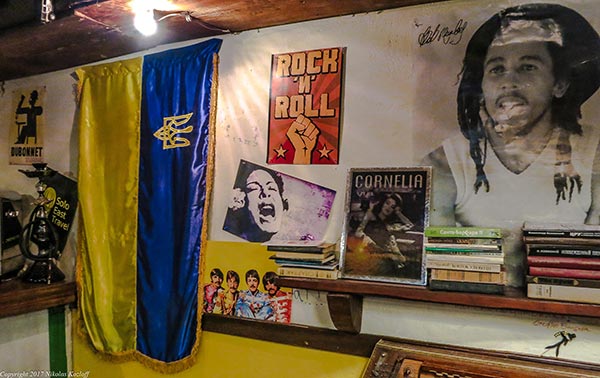
Baraban stands as a kind of nostalgic museum to revolution, though just what Maidan’s legacy really means may surely be debated. By now we’ve all heard the official version of events: concerned lest the government of Viktor Yanukovych tilt Ukraine toward the Kremlin, demonstrators occupied Maidan square in Kiev and pushed for a so-called association agreement with the European Union. Once security forces resorted to repression, however, the crowd became radicalized as some activists called for an end to the overall culture of corruption. As violence spiraled out of control and Yanukovych was eventually forced to flee the country, there was little doubt that peaceful demonstrations had morphed into full-scale rebellion.
From Orange Revolution to Maidan Revolution
It’s tricky to interpret Maidan’s underlying meaning, however, since rebellion against Yanukovych unfolded in distinct phases with constituencies often pushing conflicting agendas. But while the crowd at Maidan may have held differing notions about social change, most were united in calling for more transparency and accountability in government. Indeed, many sought to rid Ukraine not only of Yanukovych but also the country’s “oligarchic” interests. “For me,” Kanishchenko remarks, “the essence of Maidan can be boiled down to the struggle for freedom of speech, economic freedoms, freedom to gather and laws protecting private ownership.”
For Kanishchenko, the latter point is personally meaningful since he’s primarily a businessman with professional dealings in the West. As the vice president of an industrial company, he helps to produce injection moulds and plastic parts for the automotive industry and companies like Volkswagen and BMW. “For me,” he says, “it’s important that this place continues to serve as a political center. But this has never been a money-making venture for me but rather a side hobby.” Even before Maidan, Baraban had been in the midst of political ferment while attracting a Bohemian clientele including writers, musicians, bloggers and journalists.
As early as the Orange Revolution of 2004-5, Kanishchenko was politically active. Outraged over fraud which handed Ukraine’s presidential election to Viktor Yanukovych, the bar owner joined millions of demonstrators who took to the streets. Brandishing orange flags, protesters demanded that the electoral result be annulled. “I was in Maidan at that time,” Kanishchenko exclaims, “and I was beaten by Yanukovych supporters. I still have the scars to show for it.” At long last, Viktor Yushchenko, who favored closer ties to the West, defeated Moscow favorite Yanukovych in a repeat run-off election.
Maidan’s Mixed Legacy
Yanukovych, of course, would have his revenge in the form of another presidential election held five years later. This time, he emerged victorious until the Maidan revolution in turn put an end to his inglorious rule. Paralyzed with fear over a Russian-backed secessionist war in the east, as well as Putin’s earlier annexation of Crimea, most Ukrainians then placed their trust in Petro Poroshenko, a member of the country’s oligarchic elite. “It’s easy to be against something,” Kanishchenko says, referring to the heady days of the Maidan revolution. “People got together quickly and were united against Yanukovych’s police state. When it comes to being for something, however, people have a much more difficult time reaching agreement.”
Indeed, for Kanishchenko and others, daily life has proven somewhat unsettling since the fall of Yanukovych. Though Kyiv is geographically distant from the front lines in the east, the psychological toll of war can sometimes be keenly felt. One day, a military veteran stepped into Bar Baraban, proceeded to get thoroughly drunk and started to berate the staff while shouting that he deserved respect for his combat service. Perhaps, Kanishchenko would not have paid the man much heed but then the bar owner noticed the serviceman carried a grenade. Getting more and more belligerent, the army veteran threatened to pull the pin out from the explosive. White with fear, Kanishchenko tried to reason with the man, though it was only after some time that the bar owner got his customer to stand down and cease his threats.
Meanwhile, street protests have given rise to worrying rightist and nationalist sentiment and the government has failed to provide sufficient criticism of such backward political elements. Many Ukrainian nationalists, meanwhile, tend to frequent Bar Baraban. “I’m a nationalist myself,” Kanishchenko remarks, “but in a soft and moderate fashion. I want to be able to switch on TV and hear Ukrainian, which is not the case now and it’s not fair. I realize, however, that you simply can’t force people to speak your language, or sing songs in Ukrainian or write books in Ukrainian.”
Persistence of Nationalist Symbols
Coming from Kanishchenko, such sentiments sound pretty reasonable, but then the bar owner draws my attention to a red and black flag hanging on the door. The flag is associated with the UPA or Ukrainian Insurgent Army, which was a military offshoot of a group linked to Ukrainian nationalist Stepan Bandera, a historical figure who continues to stir controversy. Indeed, Bandera sought to make Ukraine into a one-party fascist dictatorship free of other ethnic minorities. Within the historical context of the 1930s this primarily meant forcible removal of Poles from Ukrainian territory.
During World War II, the UPA emerged as a nationalist guerrilla outfit which battled Soviet, Polish, and Czech forces in the name of independence. However, at one stage during the conflict the UPA also cooperated with the Nazis. Indeed, when Germans entered the western Ukrainian city of Lviv in June, 1941 Bandera’s nationalists joined Nazi Einsatzgruppen in carrying out pogroms against the Jews. By war’s end, it was said that both organizations which had been led by Bandera, that is to say the UPA as well as the Organization of Ukrainian Nationalists (OUN), engaged in atrocities against Poles, Jews and others.
Today, the red and black flag, which stands for blood and soil, has resurfaced in Ukraine. Rightist political party Svoboda, in fact, brandished the UPA flag on Maidan square during the revolt against Yanukovych. Svoboda claims that history has misjudged the UPA’s record and therefore Ukraine should honor partisan fighters’ memory in sports stadiums and elsewhere. Some party members also sport a traditional Cossack Ukrainian haircut called an oseledets or Mohawk. Right wing zealots, meanwhile, dress in military-style outfits with red and black insignias. Around Maidan square, meanwhile, red and black flags flutter in plain view.
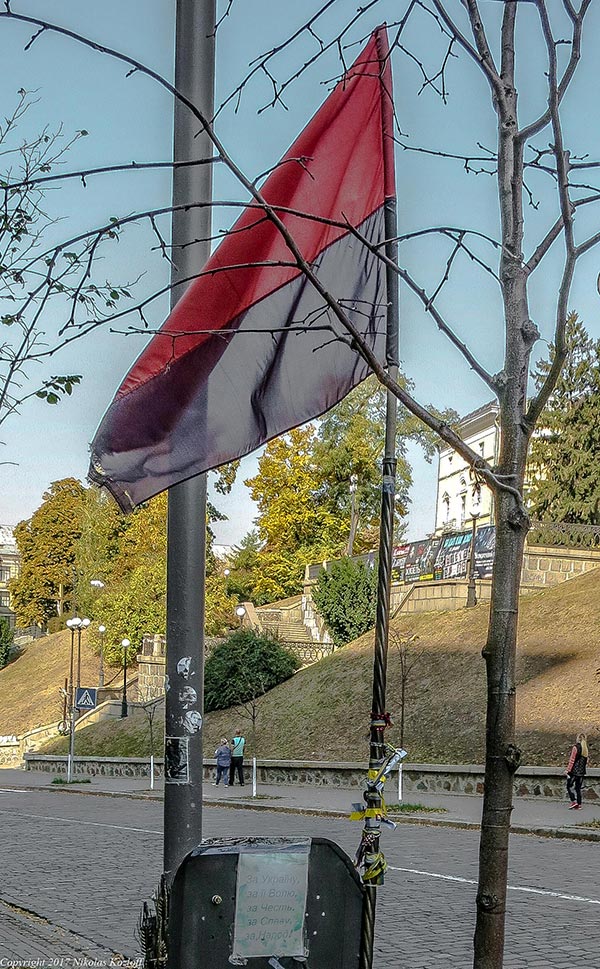
“I don’t like Svoboda,” Kanishchenko remarks, even though his bar might suggest otherwise. Baraban is full of eclectic political symbols which don’t seem very consistent. On one wall, there’s a big portrait of Che Guevara. “Personally I don’t think Che was a good person,” Kanishchenko says, “though he represents a symbol of political change. Che’s on the wall simply because someone gave the image to me as a gift.” In the back of the bar, someone has scrawled the words “Praviy Sektor,” or Right Sektor, another right wing nationalist party whose homophobic members sought to shut down LGBT film screenings and most likely attacked gay marchers in Kyiv.
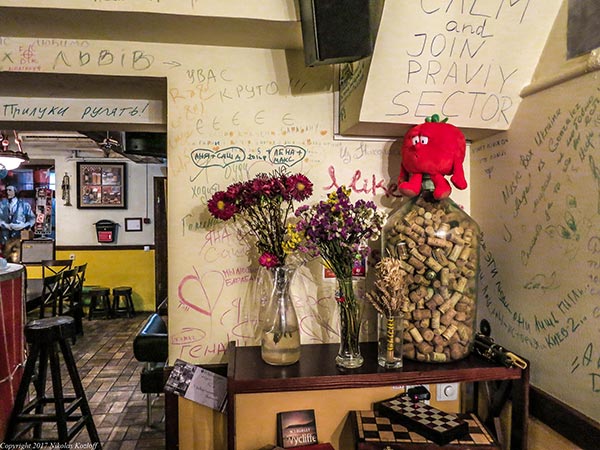
In current day Ukraine, history takes on potent political meaning. The red and black flag, Kanishchenko remarks, originated with Ukrainian Cossacks whose independent state was crushed by the Russian Czars. “There’s nothing wrong with the flag,” Kanishchenko continues, adding that he himself covers his Ukrainian passport in a kind of red and black cover. Not surprisingly perhaps, the bar owner ran into trouble when he attempted to cross the Polish border by car. A border guard, Kanishchenko explains, was “very angry with me” when he saw the cover, since the UPA carried out a series of massacres in Nazi-occupied southeastern Poland in 1943-44. Anticipating the creation of an independent Ukrainian state after the war and the implementation of a possible plebiscite, the UPA hoped to wipe the slate clean by carrying out ethnic cleansing, eradicating the Polish minority and reclaiming lands for ethnic Ukrainians.
Is Ukraine Truly “Modern”?
It’s precisely this type of Right Sektor graffiti which plays into the hands of Vladimir Putin, who seeks to portray Ukraine as a bastion of right wing fascism. But all along, Kanishchenko remarks, all he wanted was for Kyiv “to become a part of the civilized world.” Kanishchenko complains about the country’s educational system, which in his view is a “disaster.” His son is enrolled at Kyiv Polytechnic Institute, whose physical infrastructure is falling apart with dilapidated walls. Kanishchenko explains that his son is a computer programmer who was initially enthusiastic about pursuing his studies. His instructors, however, are “totally outdated” and teach languages like Basic and Fortran.
For all these reasons, Kanishchenko says, it’s highly desirable to study abroad. Despite these shortcomings, the Baraban owner observes encouraging signs within the post-Maidan milieu, such as a modestly successful anti-corruption drive within police ranks. Kanishchenko is also heartened by a new tax code, new roads and reforms within Ukraine’s health sector. Overall, the bar owner adds, society has become more transparent and government misdeeds are more readily exposed. Meanwhile, a “proactive” element, say five to ten percent of the population, is politically active and holds the government to greater account.
Ironies of the “Civilized West”
Without crucial pressure and lobbying from the E.U. and U.S., however, Kanishchenko worries that Ukraine won’t be able to fulfill lofty ideals of the Maidan revolution, let alone transform into a modern and western country. “Everyone was thinking that we would become Europe immediately,” the bar owners declares, “but it takes time and the country was never exposed to the West.”
Kanishchenko says only a minority of his countrymen and women have traveled abroad, and even then many choose to simply vacation in Turkey or elsewhere. A very small percentage of people, meanwhile, have actually lived in Western Europe or carried out any business there. “One extreme solution,” says the bar owner, “is for the government to send young people to Western Europe on scholarships. The majority will come back with a different mindset.”
Isn’t it a little ironic, however, that Ukraine seeks to become part of the West at precisely the same moment that the E.U. has been challenged from within via Brexit as well as other nationalist movements, and Donald Trump threatens to move the U.S. much closer to the Kremlin than his predecessor? Kanishchenko recognizes the political contradictions, but asserts there is no other option. “Europe and NATO are the only escape for Ukraine,” he says. “We need to be backed up by other powers in our struggle with Russia.” When asked whether Ukraine had become more tolerant toward ethnic minorities since the Maidan revolution, Kanishchenko responds, “It’s certainly a growing trend.” Pausing for effect, he adds “I think however that tolerance in the West, which used to be one of the proud hallmarks of society, is now changing because of the migrant crisis.”
Update: Bar Baraban has now closed. In its place is a beauty salon.

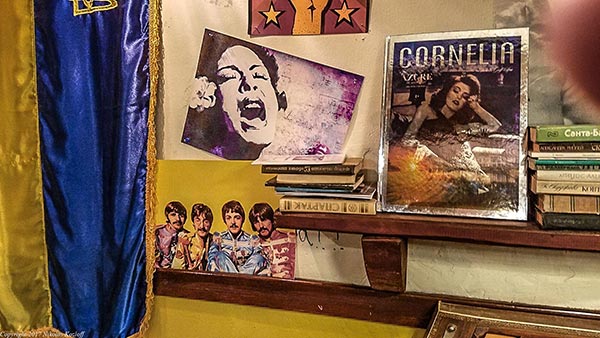
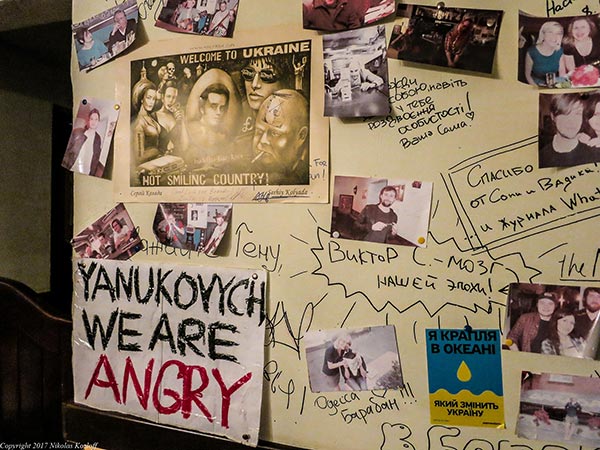
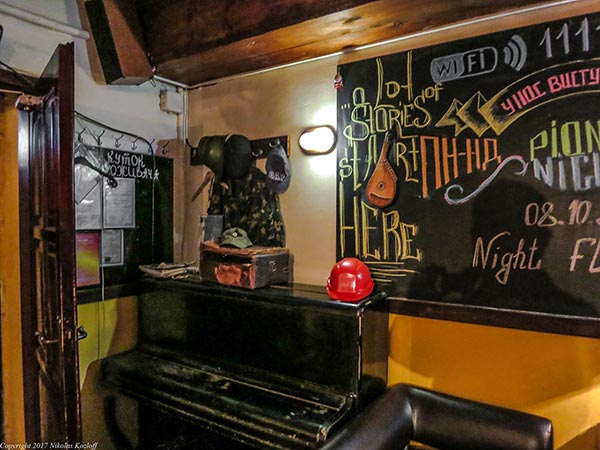
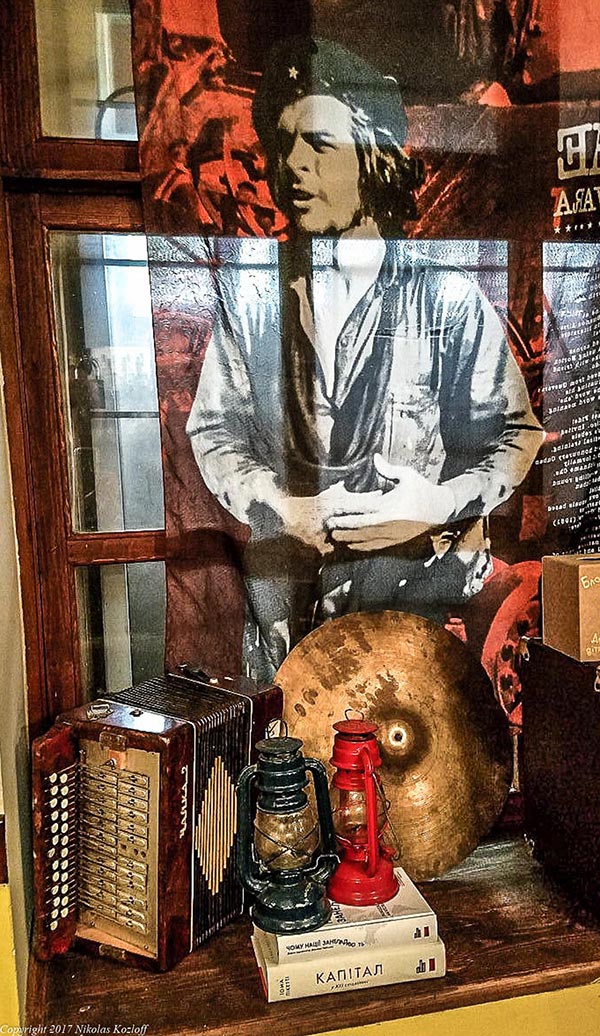
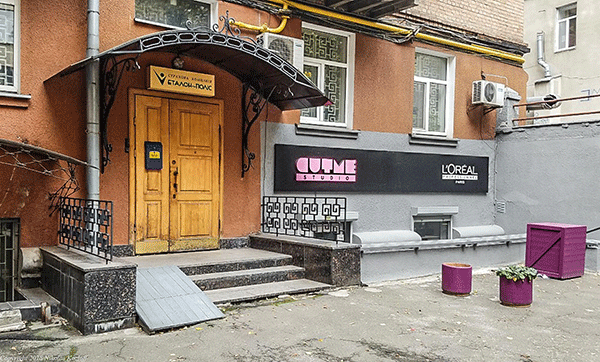
Leave a comment